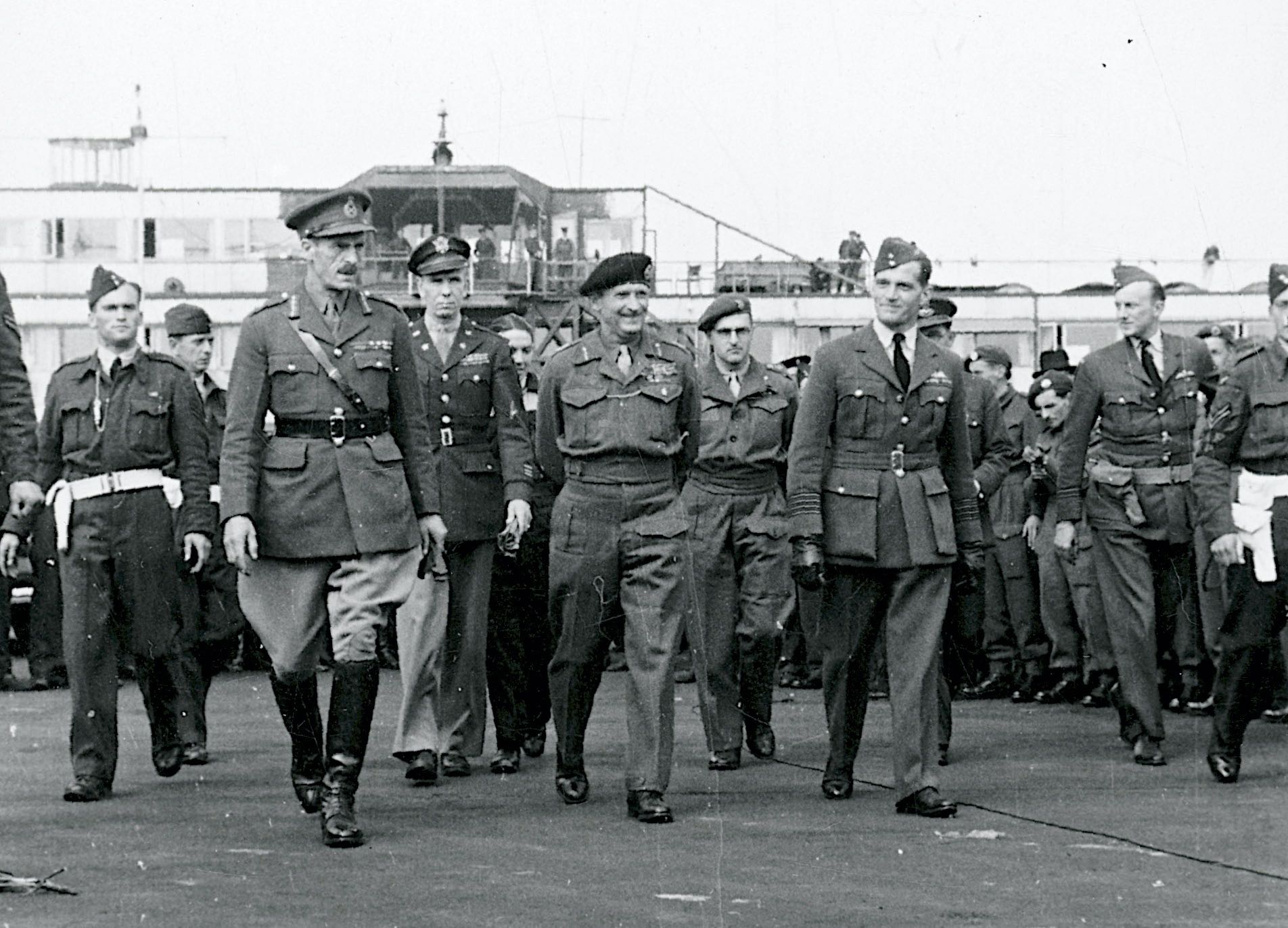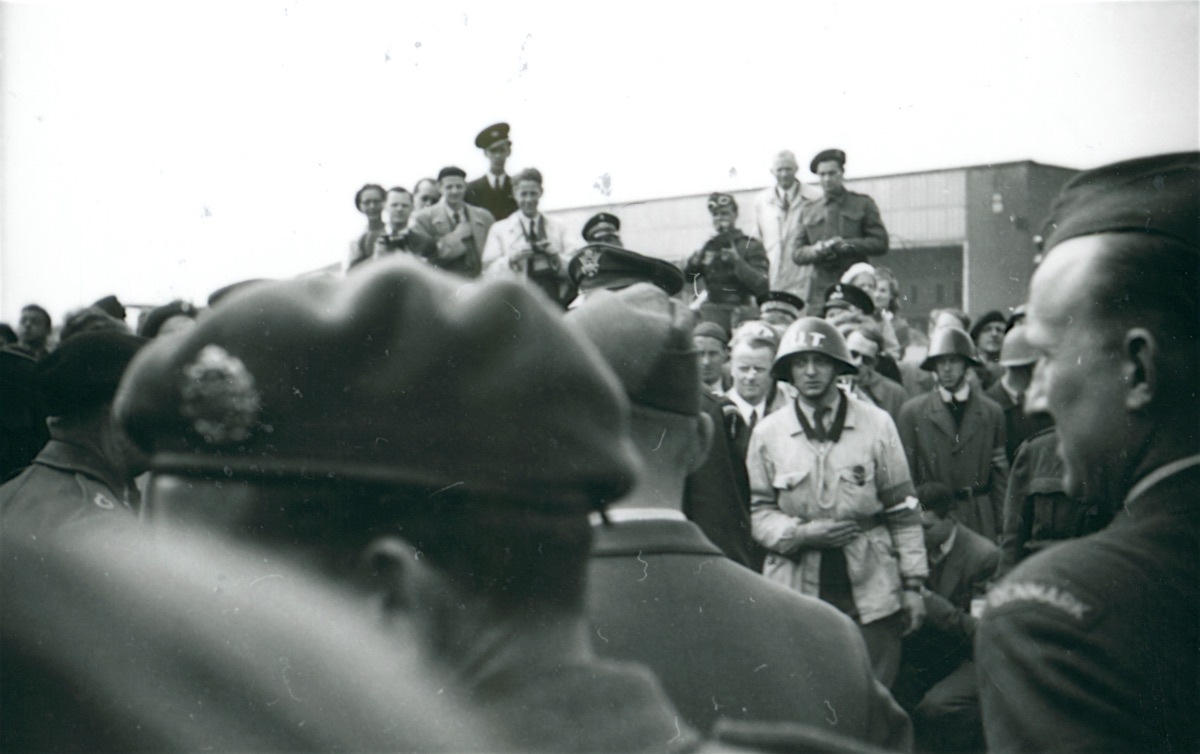Bodyguard for Monty
Article
Sometimes the man in the centre is not the most interesting person in a photograph. This was certainly true, when I was looking at a photograph of Field Marshal Montgomery returning to his aircraft at B.160 Copenhagen/Kastrup on 12 May 1945. In my research the most interesting man in the photograph is the man on the far right. This is Flt Lt Vagn Christensen.

Five years before this photo was taken Vagn Christensen was in charge of the Danish Air Lines’ (Det Danske Luftfartsselskab) London. Danish Air Lines had continued the service on London (and Berlin for that matter) despite the outbreak of war in September 1939. On 9 April 1940, as the German forces crossed the Danish border, the Danish Air Lines’ Fw 200A-02 Condor OY-DAM 'Dania' and crew, which had arrived the day before, was now stranded. The crew included pilot and captain Harald Julius Hansen, flight engineer Hans Jørgen Marius Dalbro, Jensen as radio officer and stewardesse Doris Augusta Marie Jensen. The aircraft seized as a prize of war by the British government. This meant that the crew as well as Christensen were without both ajob and an income. Christensen informed the British authorities that they were all anxious to be of assistance to the allied cause.[1]
In 1941, Christensen volunteered for the Royal Air Force and he was trained as pilot. Following training in the UK and Canada, he served in 234 Sqn from November 1943 and, in April 1944, he was posted to 1 Sqn. He flew a number of operational missions as Spitfire pilot.[2]
At the end of the war in Europe he was from HQ Transport Command to 123 SP for liaison duties. The advance party of this unit arrived in Copenhagen on 12 May, but Christensen had arrived on the 7th. Having been the representative in London for Danish Air Lines before the war, Christensen was soon engaged in the re-establishment of air transport between London and Copenhagen. The British insisted that the aircraft on the service should operate as military aircraft with a military crew; therefore, the Danish Military Air Transport Command was established, with Christensen in charge.[3]
This is the background that makes both the photographs below and above interesting to my research. Even if it is only brief moments that are captured, it shows Christensen on the ground in Kastrup performing his duties as a liaison officer during Montgomery’s visit.

Endnotes
[1] Mulder, R. and Ott, G. (2013). Focke-Wulf Fw 200 Condor: with Danish Air Lines in War and Peace : 1938-1946, p. 63.
[2] Plannthin, M. (2017). Britain’s Victory, Denmark’s Freedom: Danish Volunteers in Allied Air Forces During the Second World War, p. 48-51.
[3] Op.cit., p. 96.